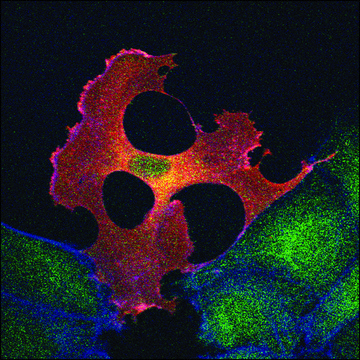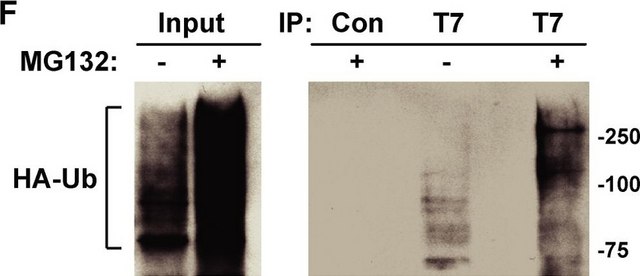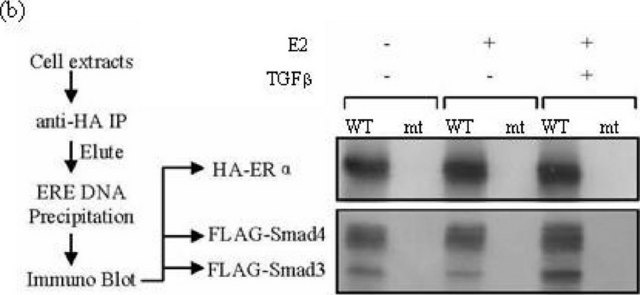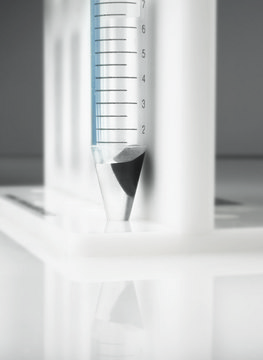推荐产品
生物来源
mouse
质量水平
偶联物
unconjugated
抗体形式
purified immunoglobulin
抗体产品类型
primary antibodies
克隆
MAT1-87, monoclonal
浓度
~2 mg/mL
技术
immunoprecipitation (IP): 5-10 μg
western blot: 1-2 μg/mL
同位素/亚型
IgG2a
运输
dry ice
储存温度
−20°C
靶向翻译后修饰
unmodified
一般描述
Monoclonal Anti-MAT (mouse IgG2a isotype) is derived from the MAT1-87 hybridoma produced by the fusion of mouse myeloma cells and splenocytes from BALB/c mice immunized with a synthetic MAT peptide HNHRHKHGGGC conjugated to KLH.
Monoclonal Anti-Mat-Tag® antibody was used in one-step purification of histidine-tagged fusion proteins under high pressure and high flow conditions. It is used in the characterization of the molecular architecture of human caveolin-3 and interaction with the skeletal muscle ryanodine receptor.
特异性
Monoclonal Anti-MAT recognizes the seven amino acid MAT epitope sequence within either N or C terminal MAT-tagged fusion proteins.
免疫原
synthetic MAT peptide HNHRHKHGGGC.
应用
Monoclonal Anti-MAT-Tag® antibody produced in mouse has been used in:
- enzyme linked immunosorbent assay (ELISA)
- immunoblotting
- immunoprecipitation
- immunocytochemistry
The MAT tag is a seven amino acid peptide tag that binds to transition metals such as Nickel and Cobalt. This tag, which consists of the sequence HNHRHKH, allows the purification of MAT fusion proteins using immobilized metal affinity chromatography (IMAC) such as the highly selective HIS-Select® Nickel Affinity Gel. The MAT tag sequence can be incorporated into both prokaryotic and eukaryotic expression vectors.
外形
Supplied as a solution in 0.01M phosphate buffered saline, pH 7.4, containing 15 mM sodium azide as a preservative.
储存及稳定性
For continuous use, store at 2-8 °C for up to one month. For extended storage freeze in working aliquots. Repeated freezing and thawing, or storage in "frost-free" freezers, is not recommended. If slight turbidity occurs upon prolonged storage, clarify the solution by centrifugation before use. Working dilution samples should be discarded if not used within 12 hours.
法律信息
HIS-Select is a registered trademark of Merck KGaA, Darmstadt, Germany
MAT-Tag is a registered trademark of Merck KGaA, Darmstadt, Germany
免责声明
Unless otherwise stated in our catalog, our products are intended for research use only and are not to be used for any other purpose, which includes but is not limited to, unauthorized commercial uses, in vitro diagnostic uses, ex vivo or in vivo therapeutic uses or any type of consumption or application to humans or animals.
未找到合适的产品?
试试我们的产品选型工具.
储存分类代码
10 - Combustible liquids
WGK
nwg
闪点(°F)
Not applicable
闪点(°C)
Not applicable
法规信息
常规特殊物品
历史批次信息供参考:
分析证书(COA)
Lot/Batch Number
The UV erythema action spectra of three coal tar preparations.
B Berne et al.
Clinical and experimental dermatology, 12(6), 400-402 (1987-11-01)
E2F1 in neurons is cleaved by calpain in an NMDA receptor-dependent manner in a model of HIV-induced neurotoxicity
Zyskind JW, et al.
Journal of Neurochemistry, 132(6), 742-755 (2015)
Gareth Whiteley et al.
The Journal of biological chemistry, 287(48), 40302-40316 (2012-10-17)
Caveolin-3 facilitates both caveolae formation and a range of cell signaling pathways, including Ca(2+) homeostasis. Caveolin-3 forms a disc-shaped nonamer that binds the Ca(2+)-release channel, RyR1. Multiple caveolin-3 nonamers bind to a single RyR1 homotetramer. First three-dimensional structural insights into
Jacob W Zyskind et al.
Journal of neurochemistry, 132(6), 742-755 (2014-10-04)
The transcription factor E2F1 activates gene targets required for G1 -S phase progression and for apoptosis, and exhibits increased expression levels in neurons in several CNS diseases including HIV encephalitis, Alzheimer disease, and Parkinson's Disease. While E2F1 is known to
Zhan-Peng Huang et al.
The Journal of clinical investigation, 125(11), 4122-4134 (2015-10-06)
Cardiomyopathy is a common human disorder that is characterized by contractile dysfunction and cardiac remodeling. Genetic mutations and altered expression of genes encoding many signaling molecules and contractile proteins are associated with cardiomyopathy; however, how cardiomyocytes sense pathophysiological stresses in
我们的科学家团队拥有各种研究领域经验,包括生命科学、材料科学、化学合成、色谱、分析及许多其他领域.
联系技术服务部门








